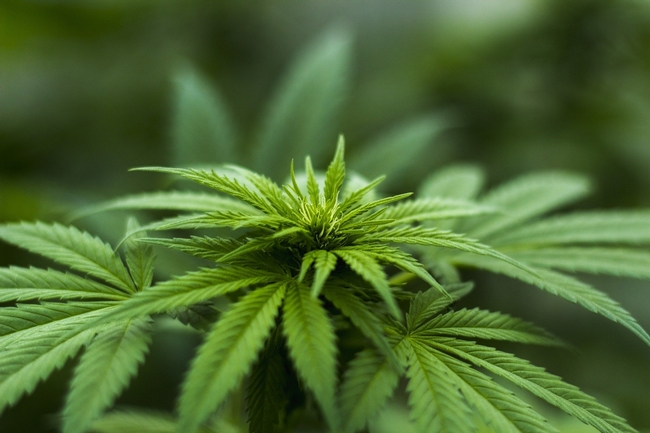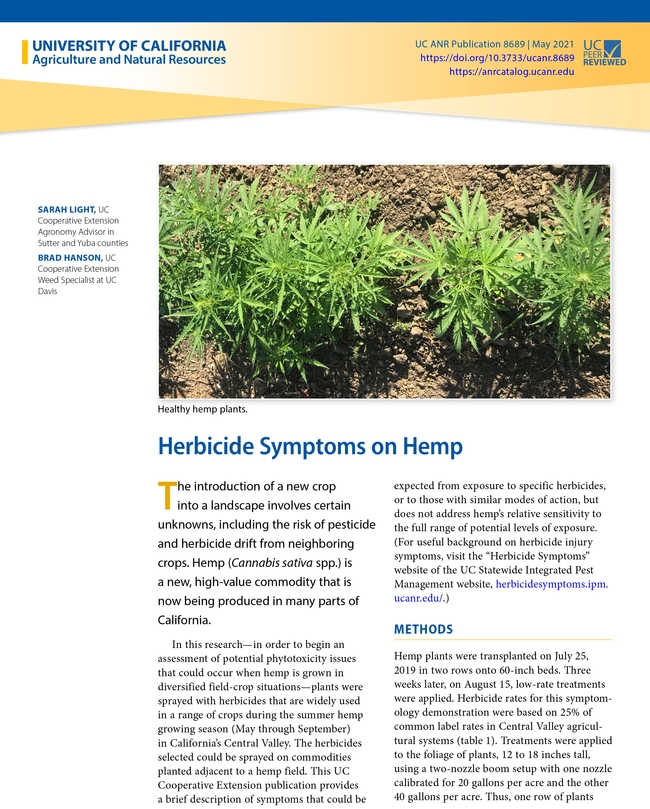
The results are available in a free downloadable publication in the UC Agriculture and Natural Resources catalog at https://anrcatalog.ucanr.edu/Details.aspx?itemNo=8689.
Hemp was legalized for production nationwide in the United States under the 2018 Farm Bill. Hemp has many uses – from textiles to food to biofuel – however is most sought-after for the chemical component cannabidiol (CBD), extracted for medicinal use.
Because of hemp's recent entry into the California crop complex, growers are hungry for information that will help them make irrigation, fertilization, pest management and other decisions.
“When they see unexpected damage on the plants, our growers, county agricultural commissioners and pest control advisers need to be able to determine whether a crop might have been subjected to herbicide drift from an adjacent field or orchard,” Light said. “We provided science-based evidence that can help guide their judgement.”
The scientists exposed hemp to low rates of 19 herbicides used in California. The rates and spray coverages are higher than would commonly occur in herbicide drift situations, because the scientists sought to compare typical symptoms from several herbicide modes of action on hemp. The publication contains 25 color photographs demonstrating the notable symptoms of different herbicides. In addition, detailed explanations about the symptoms observed over a two-week period following exposure are provided.
